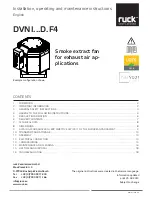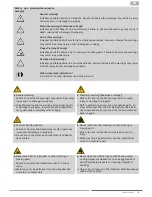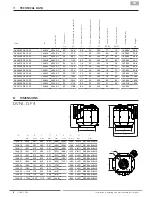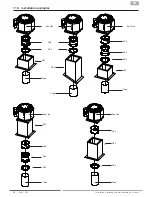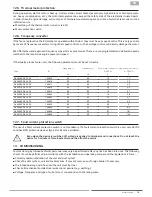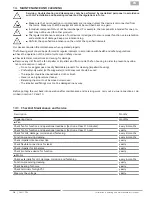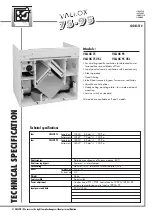
15
DVNI 225 D2 F4 30
144615
50
60
1,0
1,7
DVNI 250 D2 F4 30
144616
50
60
1,3
2,3
DVNI 280 D2 F4 30
144617
50
50
1,3
2,3
DVNI 315 D2 F4 30
144618
50
50
2,5
4,3
DVNI 315 D4 F4 30
144619
50
80
1,2
2,1
DVNI 355 D4 F4 30
144620
50
70
1,6
2,8
DVNI 400 D4 F4 30
144621
50
50
1,2
2,1
DVNI 450 D4 F4 30
144622
50
55
2,5
4,3
DVNI 500 D4 F4 30
144623
50
50
2,9
5
DVNI 560 D4 F4 30
144624
50
50
4,9
8,5
DVNI 630 D4 F4 30
144625
50
50
8,7
15,1
DVNI 710 D6 F4 30
144626
50
50
7,1
12,3
EN
If the fans are placed on the EU market or operated within the EU, they must have a speed control. This is only possible
by means of frequency converters. Using other speed controls, such as voltage control, will directly damage the motor.
We offer tested and approved frequency converters as accessories. These are pre-programmed and delivered exactly
matched to the respective engine power and speed.
12.6. Frequency converter
If third-party products are used, the following parameters must be set correctly.
The use of a fault current protection switch is not mandatory. If a fault current protection switch is used, only AC/DC
sensitive RCD protective devices (type B or B+) are permitted.
During operation, electric motors heat up. Under certain circumstances (excessively high ambient or fluid temperatu-
res, heavy contamination, etc.), the motor temperature may exceed the safety limit of the electrically isolated parts.
In order to avoid engine damage, various types of temperature monitoring are possible, of which at least one must be
installed on site:
■
Monitoring of the thermal motor current via a FU
■
Motor protection switch
Type
ID
Frequency f
N
Frequency f
max
Max. motor current I
max
3~400V Y
Max. motor current I
max
3~230V D
Hz
Hz
A
A
12.7. Fault current protection switch
12.5. Thermal motor protection
Even when the device is switched off, voltage is applied to terminals and connections. Do not touch the
device for 5 minutes after all-pole disconnection from the mains.
13. COMMISSIONING
Commissioning by trained technical personnel may only be performed after any risk has been ruled out. The following
checks should be performed in accordance with the installation and operating manual and the regulations in force:
■
Correctly sealed installation of the unit and duct system.
■
Check the duct system, unit and medium lines, if present, remove any foreign bodies if necessary.
■
The intake opening and inflow into the unit must be clear.
■
Check all mechanical and electrical protection measures (e.g. earthing).
■
Voltage, frequency and type of current must correspond with the rating plate.
www.ruck.eu |
Содержание DVN***D.F4 Series
Страница 19: ...19 EN Notes www ruck eu...

